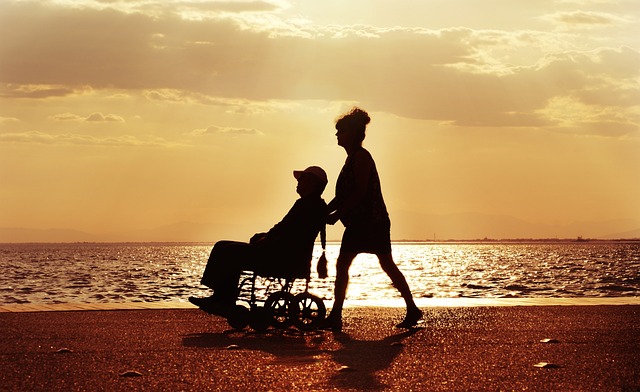For decades, Bollywood and Indian television have played a major role in shaping public perceptions of disability and differently-abled individuals. Movies and TV shows have the power to influence mindsets, break stereotypes, and create awareness. However, disability representation in Indian cinema and TV has not always been accurate or empowering.
From portraying disabled characters as helpless victims or sources of pity to celebrating resilience and independence, the journey of disability representation in Indian media has been transformative. Today, there is a growing demand for authenticity, better storytelling, and inclusive casting, ensuring that real experiences are brought to the screen.
This article explores how Bollywood and Indian TV have evolved in their portrayal of disability, highlighting the past, present, and future of disability representation in Indian entertainment.
The Early Days: Stereotypical and Pity-Based Narratives
The early years of Bollywood and Indian TV often reduced disabled characters to symbols of tragedy.
Disability as a Tragic Plot Device
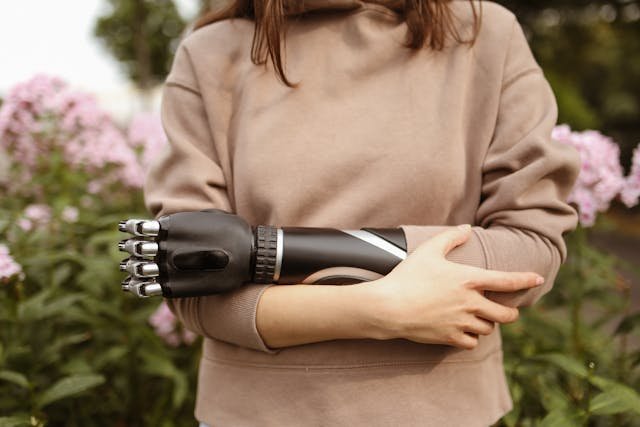
In the 1950s to 1980s, disability in Indian films was often used as a tool to evoke sympathy. Characters with disabilities were typically portrayed as helpless, dependent, and burdened by their condition. Their purpose in the storyline was either to suffer or to inspire others through their pain.
Movies like Dosti (1964) featured disabled protagonists but focused on their struggles rather than their strengths. While it was one of the first Indian films to feature disabled lead characters, it reinforced the idea that disability leads to suffering and social isolation.
At the same time, Bollywood rarely explored the daily lives, ambitions, or emotional depth of disabled characters. Instead, disability was treated as a limitation that defined the person completely, rather than a part of their identity.
The “Miracle Cure” and Unrealistic Solutions
Another common trend in early Bollywood films was the magical recovery of disabled characters. Many movies depicted blind characters regaining sight, individuals with paralysis suddenly walking again, or deaf characters miraculously hearing—all as part of a dramatic climax.
This kind of storytelling sent a problematic message—that a disabled person’s only path to happiness was through being “fixed”. Instead of showing how disabled individuals live, adapt, and thrive, these films created false hope and unrealistic expectations.
The industry failed to recognize that many disabled individuals do not seek a cure—they seek accessibility, respect, and opportunities to live fulfilling lives.
Comedy and Mockery of Disability
Unfortunately, in some cases, Bollywood misused disability for comic relief. Many films from the 1970s to early 2000s featured characters with speech impairments, mobility issues, or other disabilities who were mocked or exaggerated for humor.
This approach dehumanized disabled individuals and reinforced harmful stereotypes, making it harder for real-life disabled people to be taken seriously in workplaces, education, and social settings.
The Shift Toward More Realistic Portrayals
Over time, Bollywood and Indian television began to shift away from stereotypes and started focusing on more complex, authentic representations of disability.
Films That Challenged Stereotypes
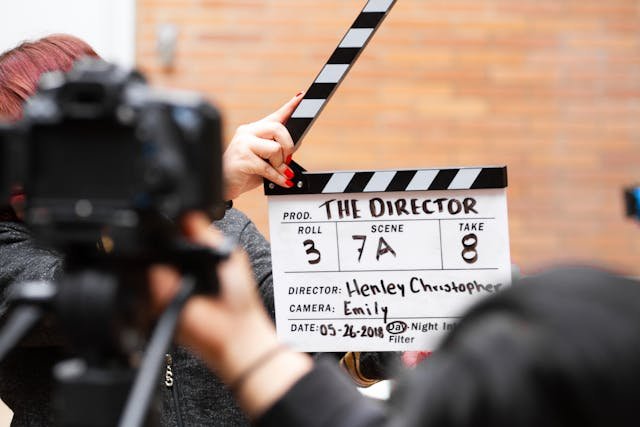
By the late 1990s and early 2000s, Bollywood started experimenting with better disability representation. Instead of using disability as just a plot device, filmmakers started to explore the real challenges, emotions, and strengths of disabled individuals.
Movies like Black (2005) took inspiration from real-life stories and portrayed a blind and deaf protagonist’s journey with education and self-empowerment. The film was a step forward but still relied heavily on a non-disabled actor playing the role of a disabled character, which reduced the authenticity of the portrayal.
Another groundbreaking film was Taare Zameen Par (2007), which focused on dyslexia—a learning disability rarely discussed in Indian cinema. The film not only helped raise awareness about learning disabilities but also encouraged Indian schools and parents to reconsider how they treat children with different learning abilities.
The Rise of Strong, Independent Disabled Characters
In recent years, Bollywood has started moving toward stronger, more independent disabled characters who are not just defined by their condition but have ambitions, emotions, and agency.
Movies like Margarita with a Straw (2014) broke many barriers by showing a woman with cerebral palsy navigating love, sexuality, and personal identity. Instead of presenting disability as a tragedy, the film highlighted self-discovery and confidence.
Another positive example is Barfi! (2012), which depicted a deaf and mute protagonist in a refreshing way—without pity or over-explanation. The film showed that disability does not prevent a person from leading a happy, adventurous life, setting a new benchmark for Bollywood storytelling.
Indian TV’s Growing Sensitivity Toward Disability
Television, which once relied on exaggerated and often offensive portrayals of disability, has also begun to change. Shows like Kya Huaa Tera Vaada and Kaali – Ek Punar Avatar featured disabled characters with depth and realism, moving away from outdated pity-based narratives.
Indian TV is still evolving in its inclusivity, but the shift toward more respectful disability representation is a step in the right direction.
The Future of Disability Representation in Indian Media

The evolution of disability representation in Bollywood and Indian television has created new opportunities for businesses, media houses, and brands to embrace inclusivity in a way that is both meaningful and profitable. While Indian cinema has taken positive steps forward, there is still a huge gap between authentic disability representation and mainstream acceptance.
To move forward, Indian media must prioritize accuracy, inclusivity, and innovation, ensuring that disability stories are told with respect, authenticity, and commercial viability. Businesses can also play a significant role in shaping how disability is portrayed, promoted, and monetized in the entertainment industry.
Here’s how Bollywood, Indian television, and businesses can strategically and effectively drive the next phase of disability representation in Indian media.
1. Creating More Disability-Inclusive Storytelling Across Genres
Most Bollywood films that include disabled characters are either biopics, dramas, or social issue films. While these genres are important, they often reinforce the idea that disability is only relevant in emotional or inspirational contexts.
Actionable Strategies for Media Companies & Studios
- Incorporate disabled protagonists into mainstream genres like action, sci-fi, horror, and romance, proving that they are just as capable of leading thrilling, high-stakes narratives. For example, a crime thriller featuring a detective with a prosthetic leg could redefine how disability is seen in Indian cinema.
- Create multi-dimensional characters with ambitions beyond their disability. For instance, a disabled entrepreneur in a business drama could inspire real-world innovation in accessibility.
- Develop kids’ animation and superhero films with disabled characters, normalizing disability from a young age. A young hero with a bionic arm or a visually impaired warrior can encourage children to see disabilities in a positive and empowering light.
By expanding storytelling across multiple genres, Bollywood can make disability representation feel organic and not just tokenistic.
2. Hiring More Disabled Actors, Writers, and Directors
While disability representation is improving on screen, the people behind the camera remain overwhelmingly non-disabled. Many disability stories are written, directed, and produced by those who have never lived with a disability, leading to gaps in authenticity.
Actionable Strategies for Talent Agencies & Production Houses
- Create dedicated mentorship and training programs for disabled individuals in filmmaking, screenwriting, and production. This will ensure real lived experiences are reflected in storytelling.
- Cast disabled actors in roles beyond just disability-focused films. For example, a disabled lawyer, journalist, or scientist in a mainstream film should not need a “disability storyline” to be cast.
- Encourage co-directing opportunities, where disabled filmmakers collaborate with industry veterans to bring authentic perspectives to large-scale productions.
By opening doors to disabled creatives, Bollywood can transform the industry from within, ensuring representation goes beyond the surface level.
3. Building Stronger Partnerships Between Bollywood and Disability Advocacy Groups
One of the biggest challenges in disability representation is the lack of collaboration between filmmakers and the disabled community. Many movies misrepresent disabilities because they do not consult experts, prosthetists, or disabled individuals during production.
Actionable Strategies for Disability Organizations & Film Industry Leaders
- Establish a “Disability Representation Board” for Bollywood, where disability rights activists, medical experts, and prosthetic manufacturers consult on films featuring disabled characters.
- Encourage media collaborations with accessibility organizations to ensure accurate portrayal of mobility aids, assistive technology, and prosthetic advancements in film and TV.
- Promote ethical storytelling workshops, where writers and directors learn how to avoid harmful stereotypes and tell authentic disability narratives.
By integrating real-world expertise into filmmaking, Bollywood can ensure its disability portrayals align with real-life experiences.
4. Tapping Into the Business Potential of Disability Representation
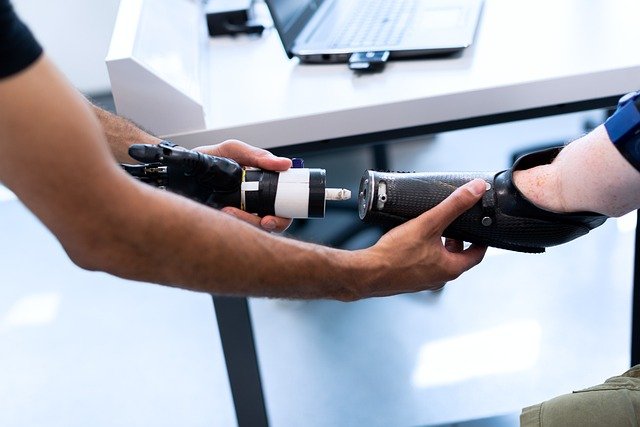
Disability representation is not just a social responsibility—it is a business opportunity. Brands, advertisers, and production houses that prioritize inclusivity can tap into a vast and underserved market.
Actionable Strategies for Brands & Corporate Investors
- Develop product placement deals with prosthetic and assistive tech companies. For example, if a character in a film or TV show uses a bionic arm or smart wheelchair, brands like Robobionics can collaborate with filmmakers to showcase real-world advancements.
- Invest in disability-inclusive merchandise and promotions. Superhero films often launch branded action figures, apparel, and games—why not do the same for a disabled superhero or a wheelchair-using action star?
- Leverage streaming platforms to create global disability content. With Netflix, Prime Video, and Disney+ expanding in India, disability-inclusive content has global commercial appeal. Investing in high-quality, exportable stories can put Indian disability narratives on the world stage.
By seeing disability representation as an economic asset rather than just a social issue, Bollywood and brands can benefit financially while making a meaningful impact.
5. Normalizing Disability in Mainstream Advertising & Marketing
In India, disability rarely appears in mainstream advertising. The rare times it does, the focus is often on charity or sympathy-driven messaging, rather than showing disabled individuals as active consumers, professionals, and decision-makers.
Actionable Strategies for Advertisers & Marketing Agencies
- Feature disabled actors in everyday commercials, from fashion to banking to automobile ads, reinforcing the idea that disabled individuals live normal, independent lives.
- Launch disability-inclusive influencer campaigns. Collaborating with disabled social media influencers, athletes, and entrepreneurs can reshape public perceptions faster than traditional advertising.
- Ensure accessibility in brand engagement. Businesses should make their websites, events, and customer service disabled-friendly, proving that inclusivity goes beyond marketing and is part of their core values.
By making disability representation a normal, expected part of mainstream advertising, Indian brands can lead a much-needed cultural shift.
6. Expanding Disability Narratives Beyond Physical Disabilities
Most Indian films and TV shows focus on visible disabilities, such as limb loss, paralysis, or blindness. However, invisible disabilities like autism, ADHD, PTSD, chronic illnesses, and mental health conditions remain largely ignored or misrepresented.
Actionable Strategies for Media Producers & Mental Health Advocates
- Expand representation to neurodivergent and chronically ill individuals, showing them in workplaces, schools, and relationships.
- Work with mental health professionals to accurately depict conditions like depression, anxiety, and bipolar disorder without exaggeration or misinformation.
- Destigmatize invisible disabilities through long-format storytelling. A TV series following a protagonist with a hidden disability can create more long-term awareness than a single film.
By broadening how disability is defined and represented, Indian media can reach millions who currently feel unseen in entertainment.
The Role of Filmmakers, Writers, and Producers in Driving Change
The responsibility of accurate and empowering disability representation in Bollywood and Indian television falls largely on filmmakers, writers, and producers. These creative decision-makers have the power to shape narratives that influence public perception, policy, and even prosthetic advancements.
Encouraging Research and Real-Life Consultation
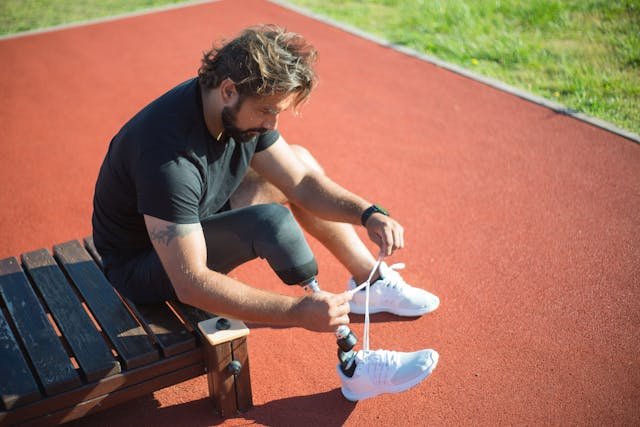
One of the biggest flaws in Bollywood’s earlier disability portrayals was a lack of research and lived experience. Many films relied on dramatic exaggerations or stereotypes rather than consulting real-life disabled individuals, doctors, or prosthetists.
Going forward, Indian filmmakers must:
- Work with disability rights activists and experts to ensure the stories they tell are based on real experiences.
- Engage with prosthetic manufacturers and medical professionals to accurately depict modern assistive technology.
- Involve disabled people in the creative process—not just as consultants, but as writers, directors, and storytellers.
By grounding narratives in real-life experiences, filmmakers can create stories that educate and uplift rather than mislead and misrepresent.
Breaking Away from Disability as a Plot Device
For decades, disability was used as a plot device—a reason for sympathy, a means of creating conflict, or a way to add emotional weight to a story. But disability is not a tragedy—it is simply one part of a person’s life.
Filmmakers must shift their focus toward creating well-rounded disabled characters who:
- Have dreams, ambitions, relationships, and challenges that go beyond their disability.
- Play active roles in their stories, rather than being passive characters who exist to inspire or teach others.
- Represent different aspects of the disabled community, including individuals who are professionals, athletes, artists, and leaders.
The more authentic and multidimensional the representation, the more Bollywood can contribute to disability acceptance and inclusion in real life.
Expanding Genre Representation for Disabled Characters
Most disability-related films in India fall into dramas, biopics, or social issue films. While these are important, disability should not be limited to serious storytelling.
The future of representation should include:
- Disabled superheroes and action stars who challenge the idea that prosthetic users cannot be physically strong.
- Romantic comedies featuring disabled leads, normalizing love and relationships for differently-abled individuals.
- Thrillers and adventure films with disabled protagonists, proving that disability does not limit one’s ability to take on challenges.
By bringing disability into all genres, Bollywood can ensure that disabled individuals are seen as full, capable members of society, just like anyone else.
The Business of Disability Representation: Opportunities for Brands and Companies
Disability representation in Indian media is not just about entertainment—it is also a major opportunity for brands, companies, and industries.
Building More Inclusive Marketing Campaigns
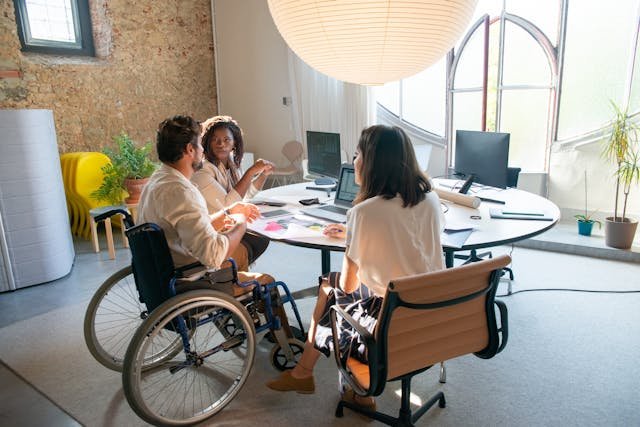
Many brands and corporations in India have overlooked disabled individuals as consumers. Media representation can help shift this mindset, proving that differently-abled individuals are:
- Active consumers who want fashionable, functional, and high-quality products.
- A growing customer base for assistive technology, prosthetics, and adaptive clothing.
- Brand advocates who appreciate inclusivity in advertising and brand messaging.
Companies can learn from global brands like Nike, L’Oréal, and Tommy Hilfiger, which have launched adaptive clothing and inclusive marketing campaigns featuring disabled models. Indian brands must follow suit by incorporating disabled individuals into mainstream advertising and promotions.
Strengthening Collaboration Between Media and Prosthetic Innovation
Bollywood’s increasing focus on prosthetics, assistive technology, and disability inclusion opens the door for collaborations between filmmakers and medical innovators.
Prosthetic manufacturers and healthcare companies can:
- Partner with Indian filmmakers to showcase the latest advancements in bionic limbs and assistive devices.
- Consult on scripts and character designs, ensuring prosthetic representation is accurate and current.
- Use media as a platform to promote real-world prosthetic success stories, making assistive technology more aspirational and less stigmatized.
Through joint efforts between media and industry leaders, India can drive greater accessibility, affordability, and awareness in the field of disability technology.
Tapping into the Growing Demand for Disability-Centric Content
As audiences become more socially conscious, the demand for diverse and inclusive content is rising. Streaming platforms like Netflix, Amazon Prime, and Disney+ Hotstar are investing in content that reflects a wider range of human experiences—including disability narratives.
Indian content creators and production houses must:
- Invest in web series and short films that explore disability with depth and nuance.
- Create content that appeals to international audiences, showcasing India’s progress in disability inclusion.
- Collaborate with disability activists and filmmakers to ensure representation is both ethical and engaging.
By doing so, Bollywood and Indian TV can stay ahead of global trends and tap into a growing audience that values authentic disability storytelling.
Final Thoughts: A New Era of Disability Representation
Bollywood and Indian TV have come a long way, from portraying disabled individuals as helpless and tragic to showcasing their strength, resilience, and aspirations. While there is still room for improvement, the progress made so far is encouraging.
At Robobionics, we believe that accurate disability representation is not just about entertainment—it’s about creating real change. As India’s media industry continues to evolve and embrace inclusivity, we look forward to seeing more stories that empower, educate, and inspire.
The future of Indian cinema should not just include disability representation—it should celebrate it.



